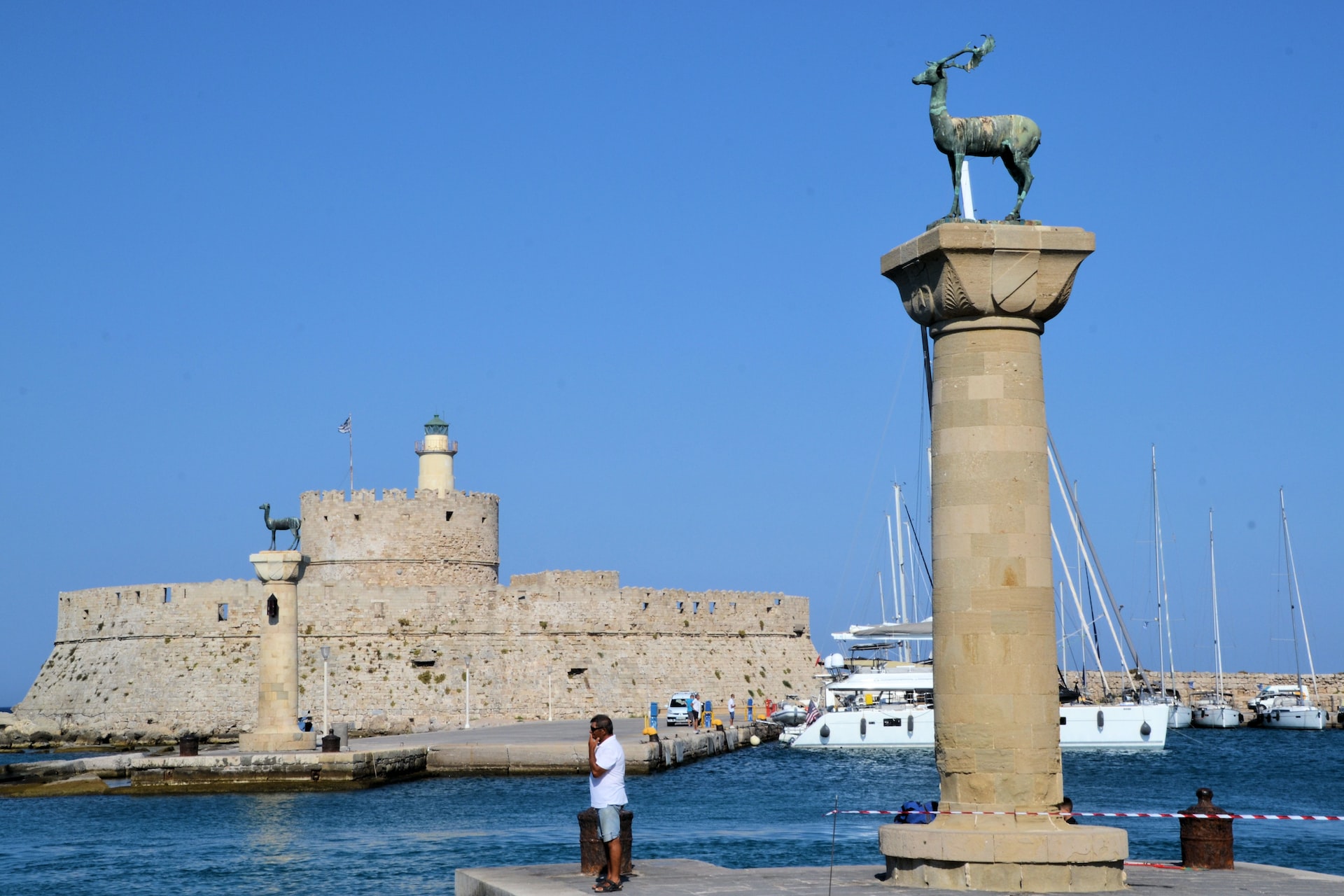Culture & Travel
13 March 2023We take great pleasure in remembering the ancient civilizations. Thankfully, many of them have left behind remnants that provide us with information about how people lived hundreds of years ago, but in other cases, there are monuments and architectural features that have withstood the test of time. The Colossus of Rhodes, a statue honoring the deity Helios that was destroyed in an earthquake in 226 BC, is a prime example of this. The religious statue known as the Colossus of Rhodes was built in the third century BC. It stood in for Helios, the Sun God of Greek mythology, and was situated on the Greek island of Rhodes in the Aegean Sea. It stood at around 33 meters.The statue took about 12 years to build.

The statue reached the list of the Seven Wonders of the Ancient World, along with the Great Pyramid of Giza, the Lighthouse of Alexandria, and the Statue of Zeus at Olympia, due to its vast size, which astounds visitors to the island. Little over 50 years after it was constructed, in possibly 226 BC, it was destroyed by an earthquake. There isn't a scrap of bronze or stone left to tell the tale.
The reports left by early authors like Polybius, Pliny the Elder, or Strabo are credited for everything we know about the Colossus of Rhodes. Moreover, references can be found in Miguel the Syrian, Philo, and Constantine VII Porphyrogeneta's Byzantine chronicles.
What, then, qualified it to join the elite group of the seven wonders of the ancient world?
Haris had been given such a big task. He most likely drew an image of blazing flames in a mane of long hair carried by the wind. The sun god was distinguished by these qualities. Also, it is likely that he resembled the depiction of Helios seen on certain ancient coins, which has a face with prominent features and lips that are slightly parted in a cherubic manner. The monument must have awed everyone who saw it with its massive size, dominance over other buildings in the city, and the impression of the sun's rays on its bronze surface.
Facts about the Colossus of Rhodes
Location: On the Greek island of Rhodes, possibly in the port of Mandraki
The person he represents: Helios, the sun god
Year of completion 280 BC
Year of destruction 226 BC
How long it took to prepare: 12 years
Length 33 meters
What materials they are made of: Bronze (exterior), iron and stone (in the structure) and marble (on the base).
Who built the statue: Greek sculptor Haris of Lindos
Where was the statue?
Despite the most well-known representations, which show the monument built on one of the strait's banks at the entrance to Mandraki harbor, the reality is that there is no proof to back up the claim that such a huge statue was situated exactly where it is said to have been. Also, it doesn't seem likely that the statue would have been in this precise spot.
It is said that it is even possible for the statue to stand at the entrance to the harbor, but given the dimensions of the statue and the strait, it is almost impossible for the statue to stand above the water and allow ships to pass underneath it. The various representations produced over the centuries have helped to reinforce this misconception. There are experts who believe that the statue was located further inland, specifically in the center of the city, where there was a temple dedicated to the sun god. But there is no evidence to support this theory.

What did the Rhodes Colossus look like?
Since there is no exact representation of the statue of the god Helios, its exact appearance is unknown. As we previously stated, rather than being accurate depictions of reality, what we know today is the product of artistic imagination. No replica of the statue has remained, according to Mark Cartwright, director of the Encyclopedia of Ancient History, so we cannot imagine what it looked like. The god Helios is shown on coins, and it's possible that he wore a crown made of the sun's rays. But unlike the most common depictions, he does not seem to be holding a torch.
Given the dimensions of the statue, it is likely that it had the shape of a pillar to resist the ravages of wind and weather. Similarly, the arms had to be either glued to the sides or removed altogether. Otherwise, any other pose would have created serious stability problems for the whole.
On the other hand, we can already put aside the common idea that the giant had one leg on each side of the harbor entrance. This would have meant that the total distance between the legs was 120 meters.
Why was the Colossus of Rhodes built?
The army of King Antigonus I of Macedonia's son, Demetrius I, erected this enormous statue to mark the city's victory over a siege in 305 BC. Rhodes had an advantageous location near trade routes. One of the key motives behind Antigonus' desire to seize control of the island was this. Yet he was unable. Macedonian soldiers were compelled to leave after a year of siege. The concept for building the biggest statue in the world was conceived as a tribute to the valor of the Rhodian warriors. As a result, the Colossus of Rhodes became associated with liberty.
Why did the Colossus of Rhodes symbolize the sun god?
The island's patron god, Helios, was worshipped by the Rhodians. A construction project of this size, which required extensive resources and more than a decade to complete, could only be explained by intense adoration.
A miracle destroyed by an earthquake
An earthquake knocked him down after 66 years in 226 BC. The god was on the ground, and the people of Rhodes opted to leave it that way because they believed it was the gods' desire, according to an ancient oracle. The statue remained in place for about 900 years until the Muslims seized it in 654 AD and took the bronze with them.



